If you looking for great bird watching spots in New South Wales, you might want to consider a trip to Wollomombi Falls in the Oxley Wild Rivers National Park near Armidale. After visiting the Wollomombi Falls Picnic Area and hiking along the Wollomombi walking track, I can tell you there is some pretty amazing bird watching to be had.
The bird watching at Wollomombi Falls is excellent. By following the Wollomombi walking track to Eagle Lookout and beyond, you can see Musk Lorikeets, Crimson Rosellas, White-throated Treecreepers, Little Wattlebirds, Butcherbirds, Rufous Whistlers and if you are lucky – Wedge-tailed Eagles.

Keep reading to discover how to find Wollomombi Falls and to see images I took during our two short visits to the area. Musk Lorikeets and the Rufous Whistler were new species for me so I was very impressed with this location for bird watching.
As an Amazon Associate, I earn from qualifying purchases. Birdwatch World earns commissions from Amazon and similar affiliate programs from any purchases made via links in this article.
Where To Find Wollomombi Falls
The Wollomombi Falls Picnic area is just a short side trip off the famous Waterfall Way, Australia’s third most beautiful tourist drive.
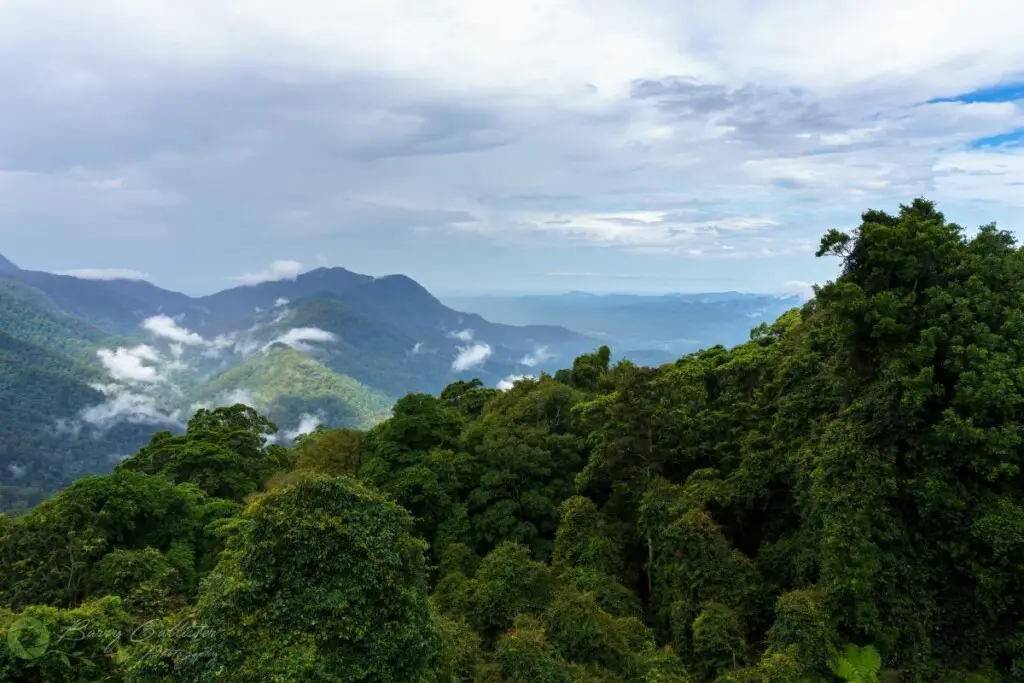
Waterfall Way winds its way from east to west, starting at the Pacific Highway in Raleigh south of Coffs Harbour, and ending at the New England Highway in Armidale.
It really is a pleasure to drive this road. Not only do you get to see some beautiful Gondwana Rainforest and stunning scenery but there is also a number of waterfalls to be seen, some that flow right beneath the road.
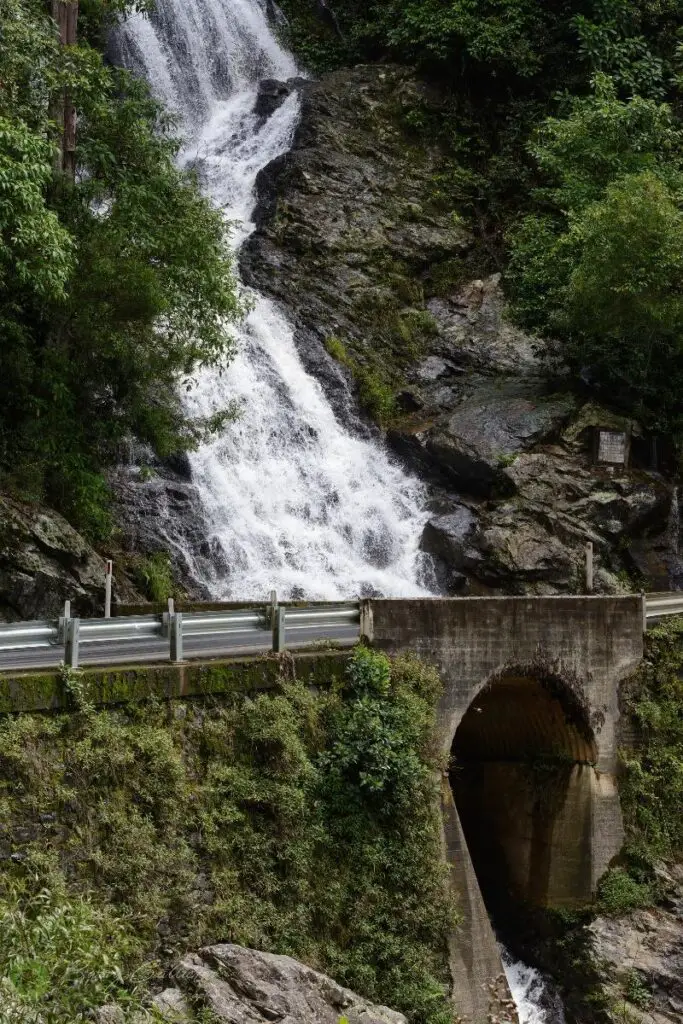
On the map below, you can see the selection of national parks that await you along the waterfall way. Though the whole trip can be done in a day, I suggest taking a few days to really appreciate the scenery and birdlife. Bring your camera!
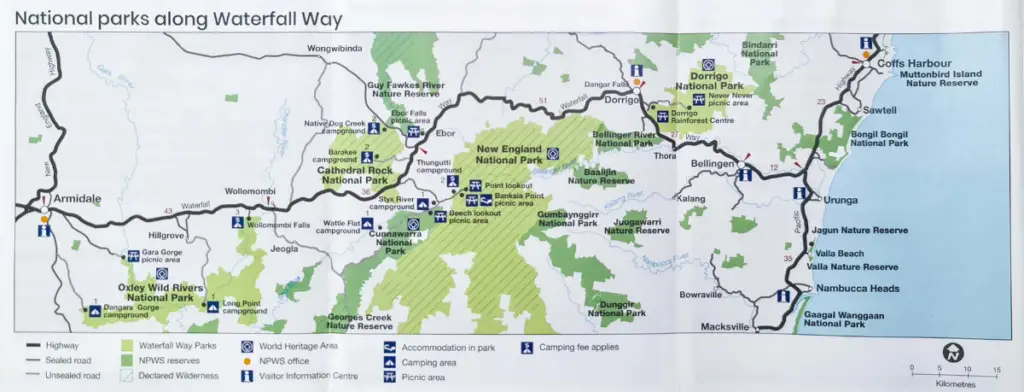
As you can see above, Wollomombi Falls is about two-thirds of the way to Armidale on the left-hand side. It is well-signposted, so you can’t miss the turn.
The road into the picnic area gives you the impression you are driving down somebody’s driveway but have no fear, it is in fact a public road. Once you cross a couple of cattle grates, you will see the sign for the picnic area. Follow the road around to the left.
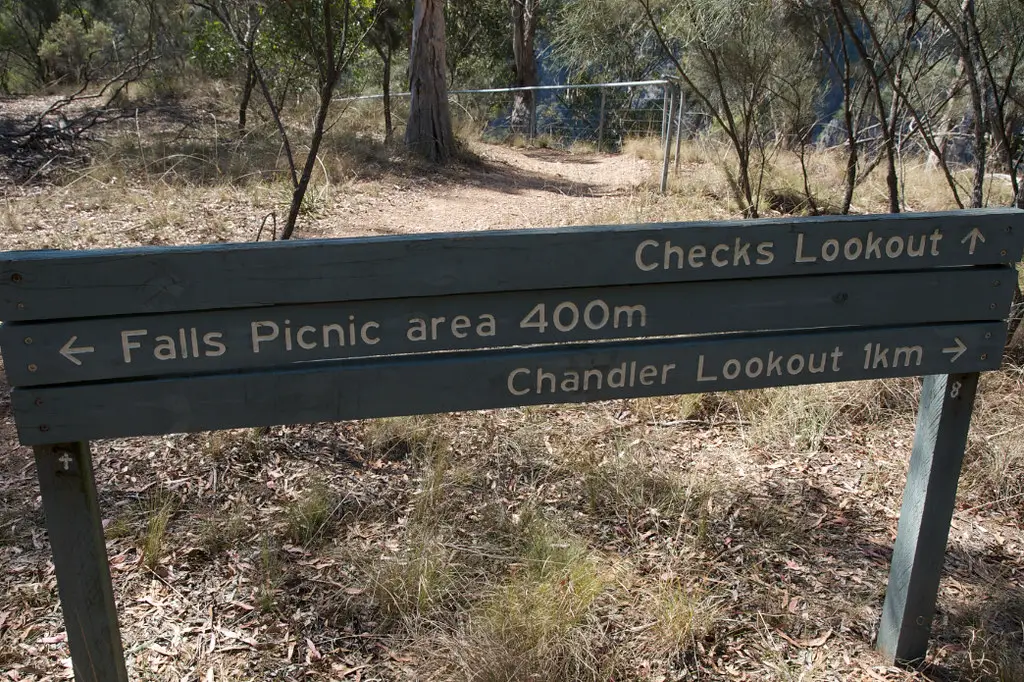
When you are facing the gorge, the Wollomombi Falls walking track is over on the left-hand side of the picnic area. A lot of birds can be seen in the picnic area itself but you will find more along either side of the track between the picnic area and Eagle Lookout.
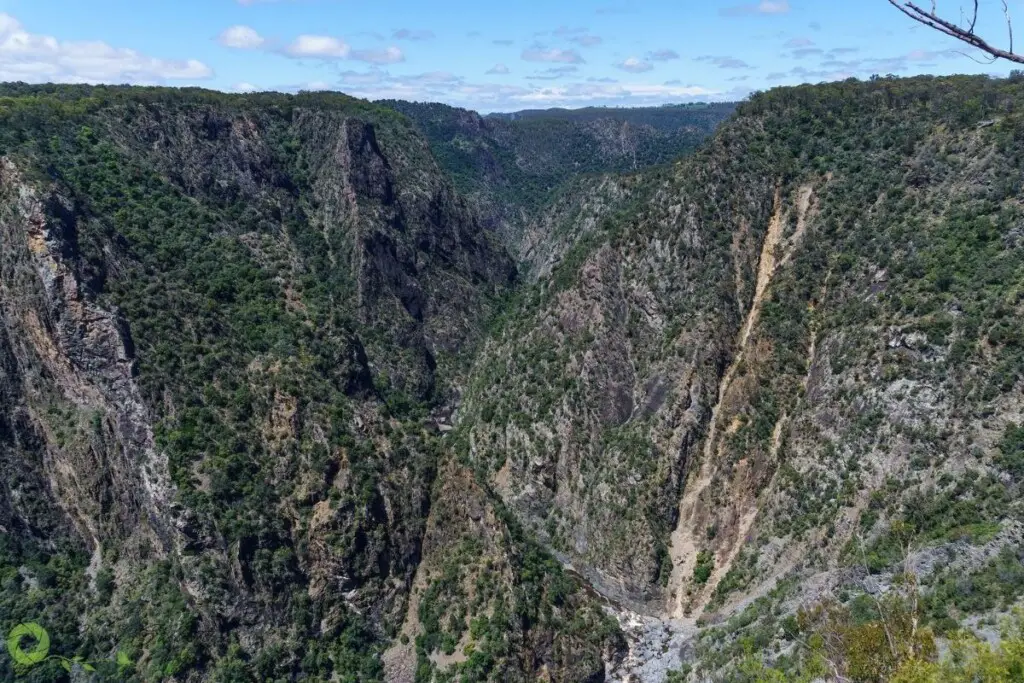
Try this article for suggestions on the gear you need for bird watching.
Bird Species Found At Wollomombi Falls
Our visit to Wollomombi falls involved at least 4 lifers. I spent a bit of time on the birding app, trying to figure out what exactly I had seen. I failed to get decent photos of most of them but I gave my new Nikon Prostaff 3s binoculars a good workout and they performed well.
Wedge-tailed Eagles
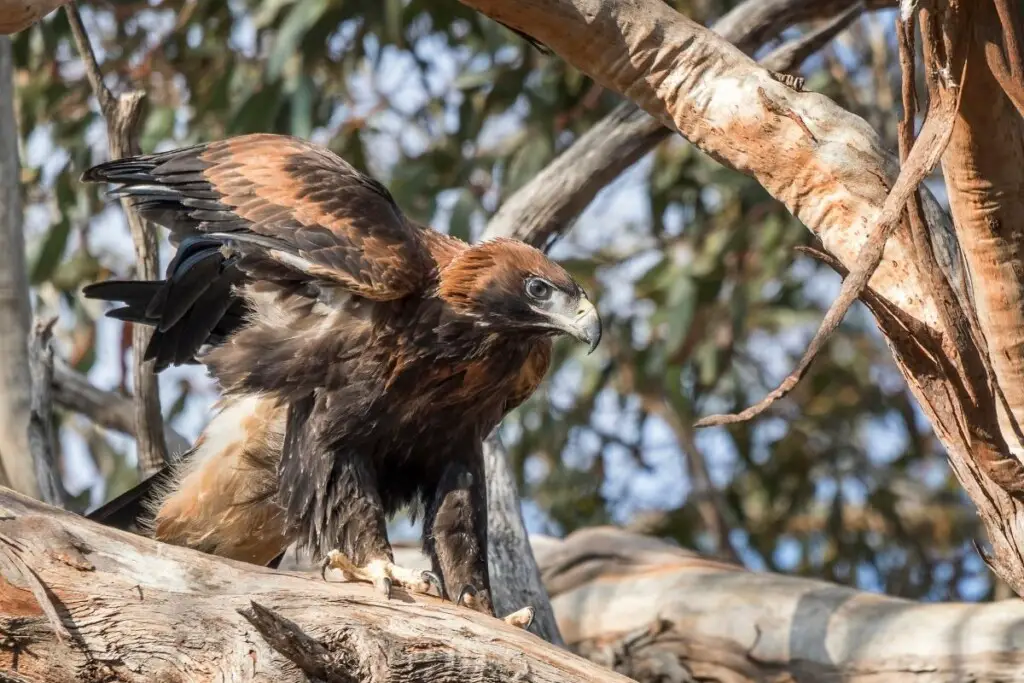
The gorge is known for its Wedge-tailed Eagles and soon after arriving, I found out why. A pair of eagles were soaring above the gorge on thermal updrafts close to the edge of the canyon. They were hidden by the trees in the picnic area so I didn’t get a very good view.
The only shot I managed to get of them was this one:
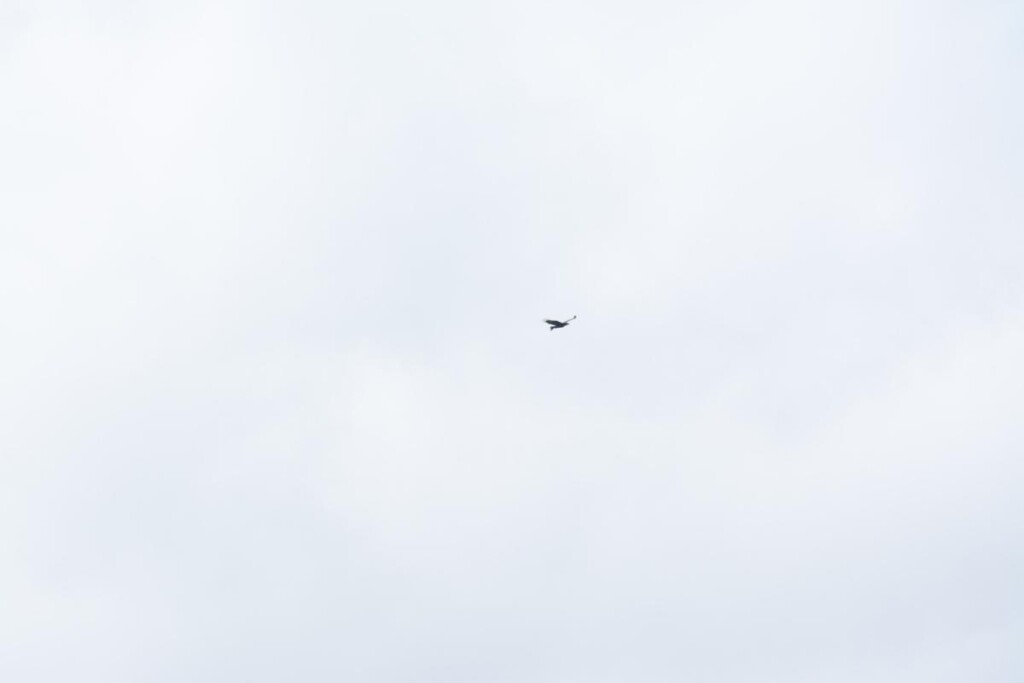
A photo not worth getting excited about?!
Musk Lorikeets
The next birds I spied were a small flock of Musk Lorikeets. Initially, I thought they might be rainbow lorikeets as they sound very similar and are similar in size.
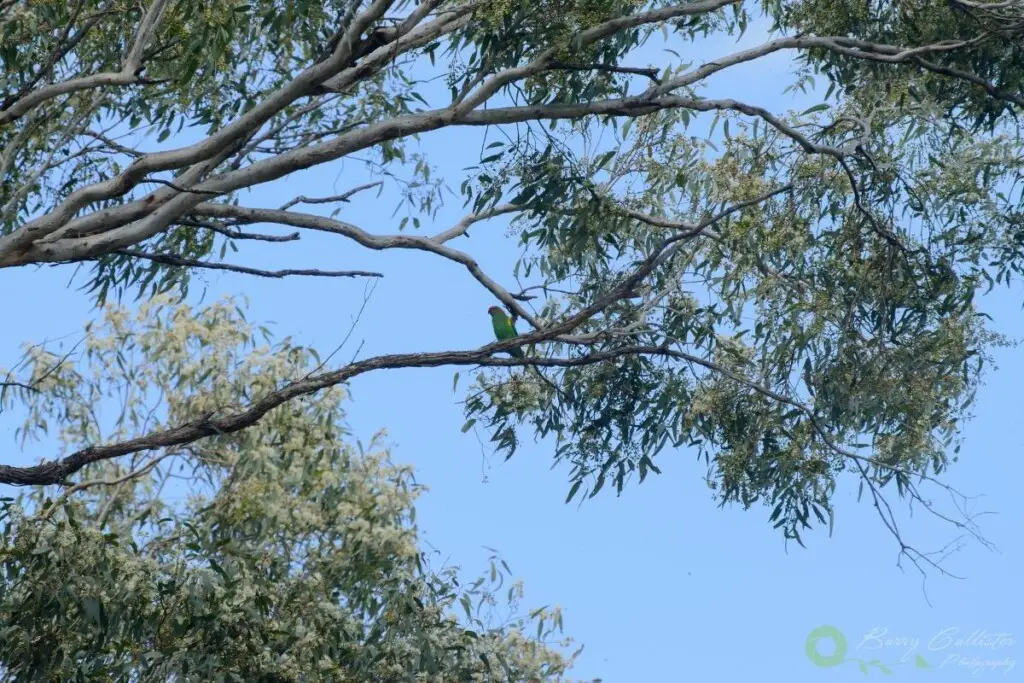
As they were high in the gum trees, I didn’t get great photos of them but I was so happy to see these lifers.
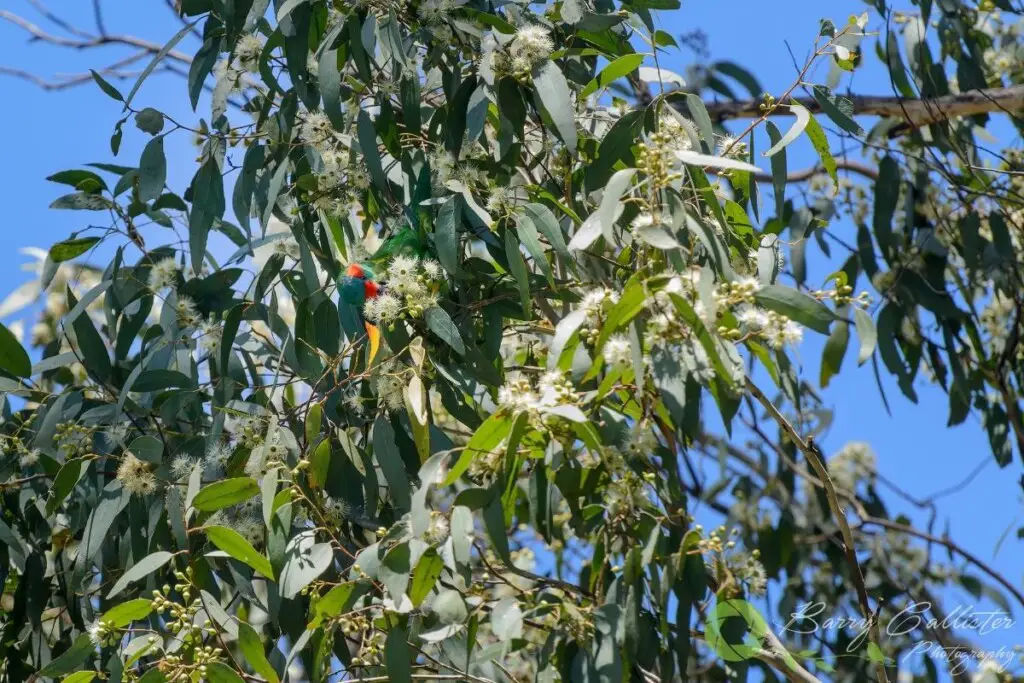
The image below by Tracie Louise captures the beauty of these colourful birds well. They are around 22 cm (8.7 in.) in length. They enjoy eating the nectar, pollen, and blossoms of eucalypts and with their green colouring are very hard to spot in the leaves of the trees.

Explore 9 types of Parrots that live in Australia in this post here on my site.
Red-browed Treecreepers
This bird was another lifer for me. There were many treecreepers about, skipping up the trunks of the trees. I had no idea some of them were Red-browed Treecreepers until I looked back at the photos.
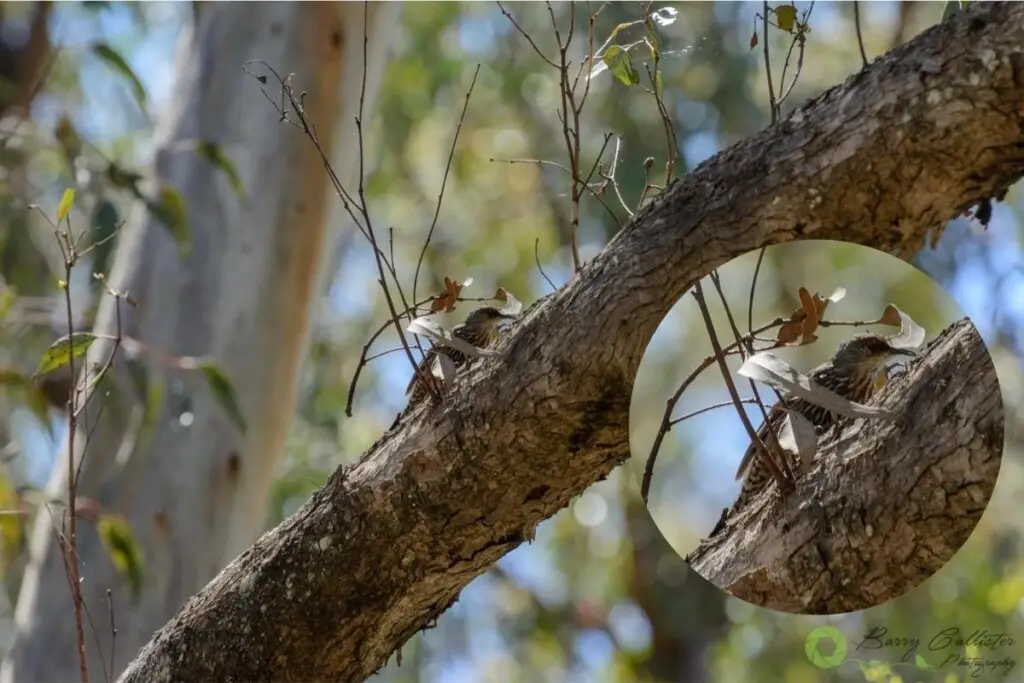
I’m still not positive about this ID but it does seem to look a lot like a Red-browed treecreeper. These birds are around 15-16 cm (5.9-6.3 in.) in length.
Treecreepers will eat adult and larval insects, mostly ants, and also spiders. They are unmistakable in their movements, “creeping” up the trunks of trees as they peck insects from between the cracks in the bark.
Grey Shrike-thrush
This is another ID I am not too sure about but it looks like a Grey Shrike-thrush, even with the motion blur that’s in this image.
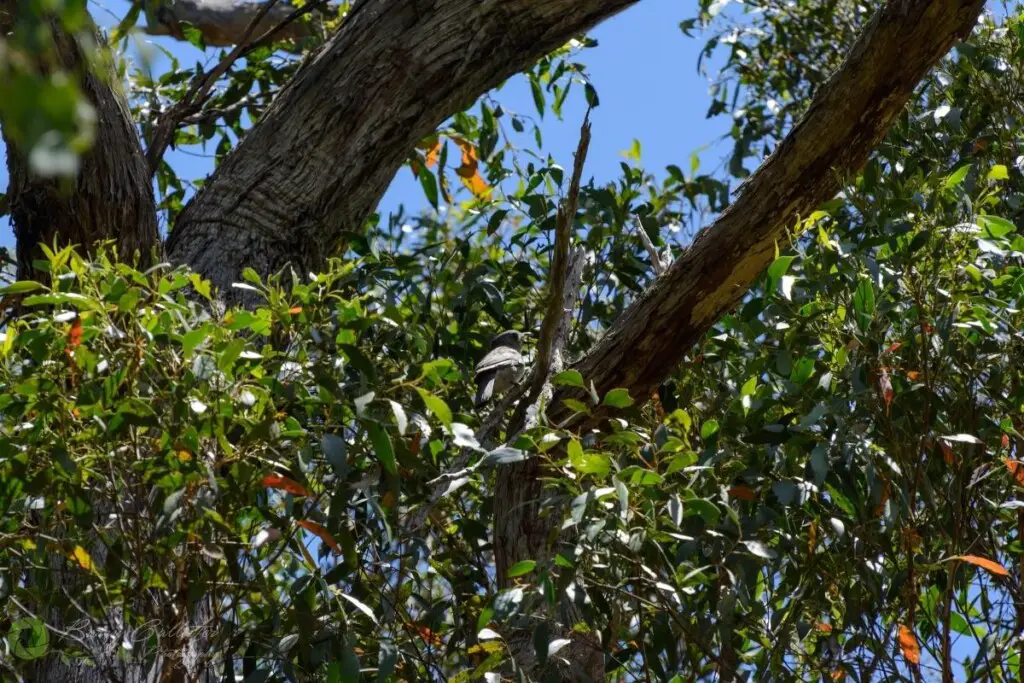
Grey shrike-thrushes are common in the area, so it is very likely it could be one. After this photo, it jumped up higher in the tree and was slightly obscured by a branch.
The image below from Tracie Louise is a much better photo of this species:
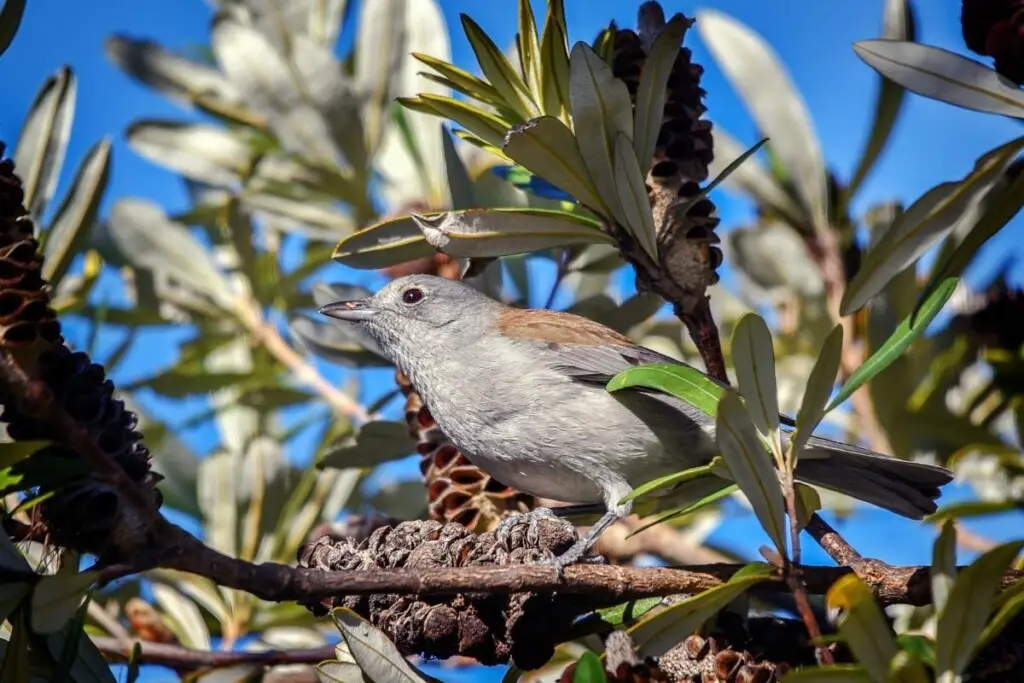
Discover 10 cute Australian birds here in this article on my blog.
Grey Butcherbird
There are not many places in Australia you can go without seeing a Butcherbird and Wollomombi Falls is no exception. The Grey Butcherbird is very common and I saw more than a few on both days I was there.

Pied Butcherbirds are also common in many places in Australia. They are more black on their upper parts rather than grey and look very similar to a Magpie.
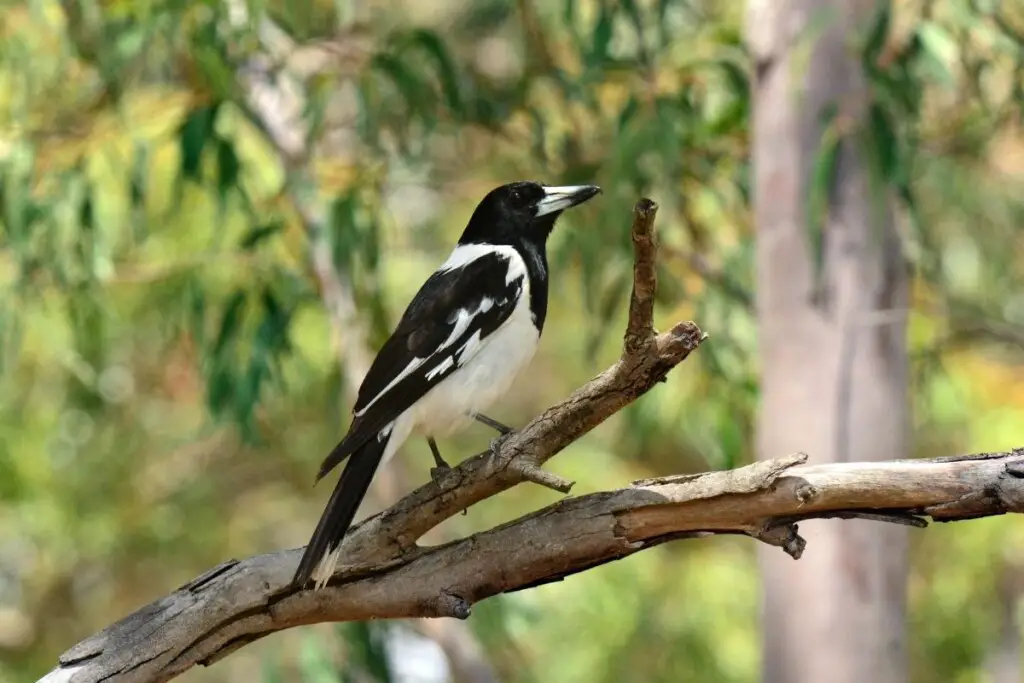
Rufous Whistler
This was the most exciting find at Wollomombi Falls. On the second day as we walked back towards the picnic area, this gorgeous Rufous Whistler was perched in a tree about 5 meters from the track. This was another lifer for me.
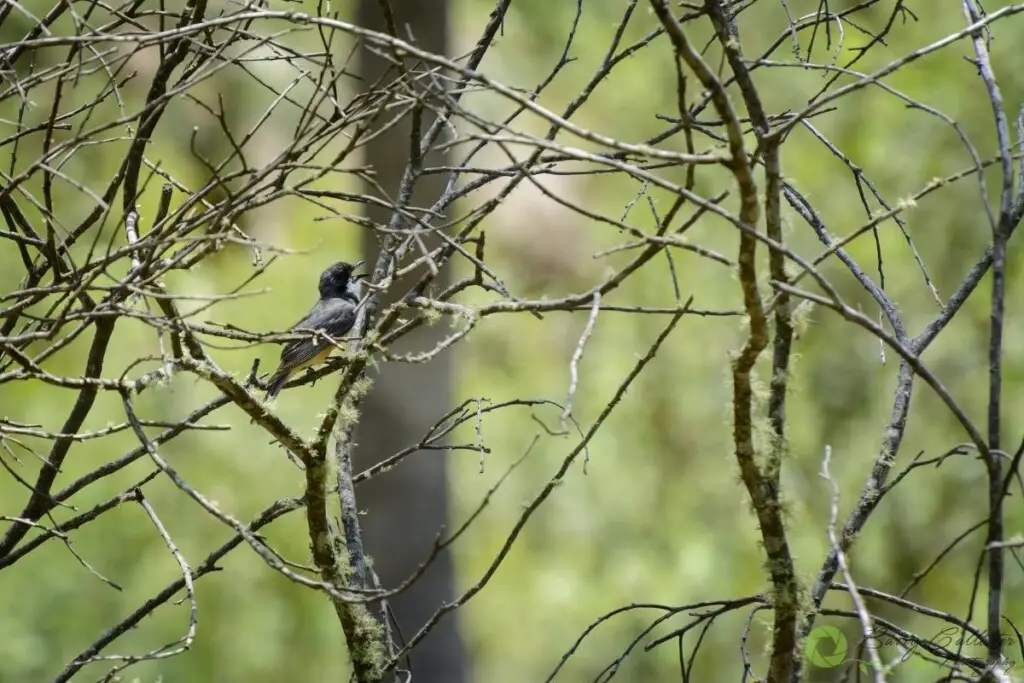
The rufous whistler has a beautiful song and this one was in full swing, letting all around it hear its skills.
Rufous whistlers are small birds, around 16-18 cm (6.3–7.1 in.) in size. The female birds are a light grey colour above and pale on their underparts.
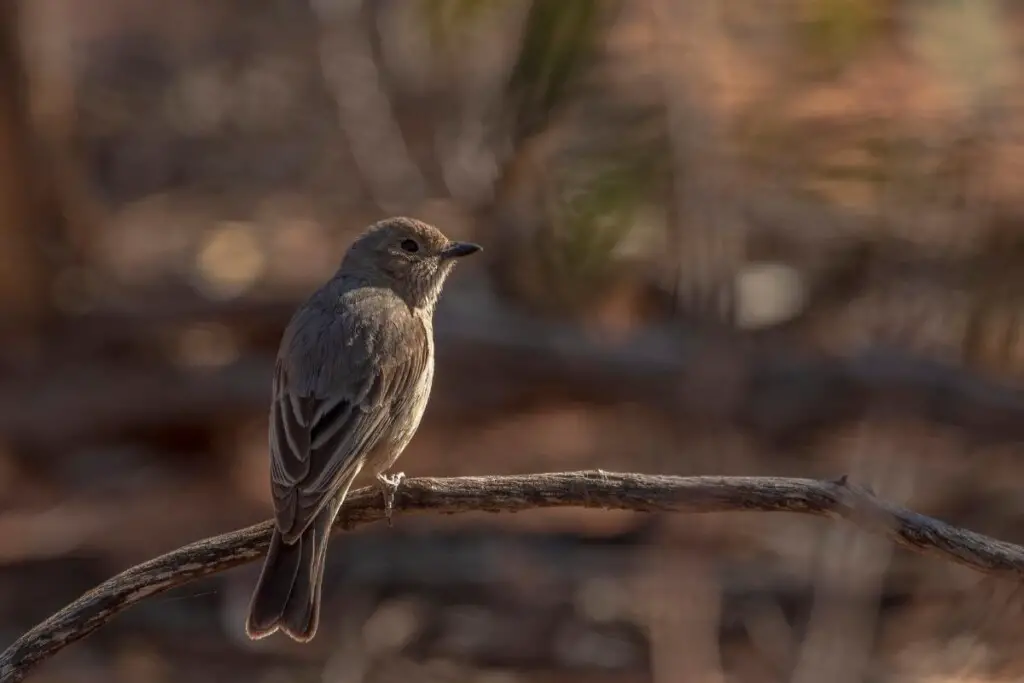
Best Time To Visit Wollomombi Falls For Bird Watching
All of the birds I saw and took photos of were seen around midday or an hour after. There were so many birds around, I was confused that it might have been earlier in the day!
The best time to visit the Wollomombi Falls area for bird watching would be early morning or evening. Most birds will eat early in the morning and at dusk so there will be more of them about.
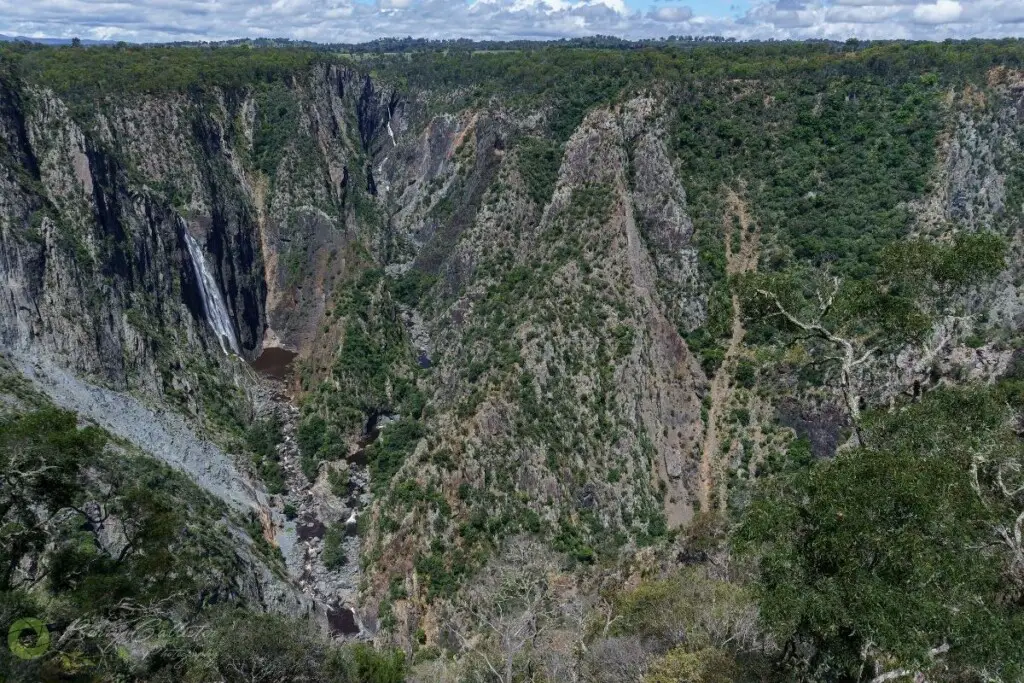
Wedge-tailed Eagles will feed early in the morning and then find a perch or glide on thermal updrafts for the remainder of the day.
All that being said however if you visit at any time of the day I’m pretty sure you will see a lot of birdlife.
Best Time Of Year To Visit
According to the NSW National Parks and Wildlife Service website, any time of the year is a good time to visit.
To help you plan your trip, consider the following:
- Summer – days are hot but the waterfalls will be swollen from the summer rains.
- Autumn – days are not too hot and the nights are not too cold. Better for bushwalking.
- Winter – much cooler air means clear days for great views.
- Spring – loads of colour to be seen with wildflowers in bloom
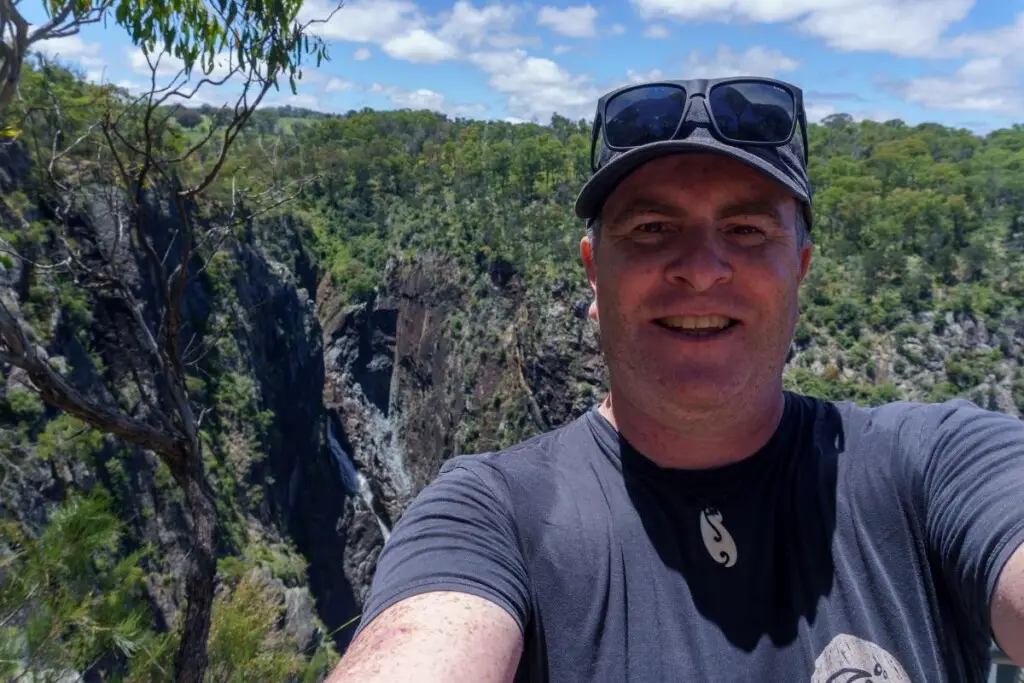
What To Bring With You
Plan for a long stay at Wollomombi Gorge when bird watching. To make your stay more comfortable and successful, consider bringing the following:
- Water and plenty of it – especially in the Summer, you will sweat out a lot of fluid so bring sufficient water.
- Good hiking boots – the Wollomombi Track is easily walked in running shoes however a good pair of hiking boots will provide more support.
- Food – the Wollomombi Track is only 4km return but if you are bird watching, you will most likely spend a lot of time out there. Bring some food.
- Binoculars – as a lot of the gorge is inaccessible, a decent pair of binoculars is essential. I use and recommend the Nikon Prostaff 3S as a relatively inexpensive and decent pair of 8 X 42 optics. Check the current price on Amazon, Adorama, or eBay by clicking the image below:
- Camera and lenses – if you’re also into bird photography, definitely bring your camera. I suggest a 300mm lens or longer (for crop sensor cameras). If you’re shooting full-frame, 400mm or longer would be best.
- Hat and sunscreen – being sun-smart is so important these days. Bring a good hat and some sunscreen.
- Tri Stool – this is not essential but is such a handy thing to have with you if you need to sit. I use and recommend the Kathmandu Roamer Tri Stool. It is super-lightweight, comfortable, and easy to carry. Check the current price on Amazon, eBay, or Walmart by clicking the image below:
- Bird App or Field Guide Book – it’s likely you will see some new species so make sure you have your bird app or field guide with you. I use the Merlin app by The Cornell Lab. *keep in mind that you will not get a phone signal everywhere around the gorge, so if you have a field guide book you may want to bring it.
- Insect repellent – there are flying insects that bite at the gorge, so bring a good insect repellent. I use and recommend YaMate, it’s natural, organic, and works really well. I am not affiliated with YaMate but this link will take you to a Google search where you can find a place to purchase some if you like.
References
- Birds information – birdsoftheworld.org
- Wedge-tailed Eagle – NSW Department of Planning, Industry and Environment
- Wollomombi walking track – nationalparks.nsw.gov.au



